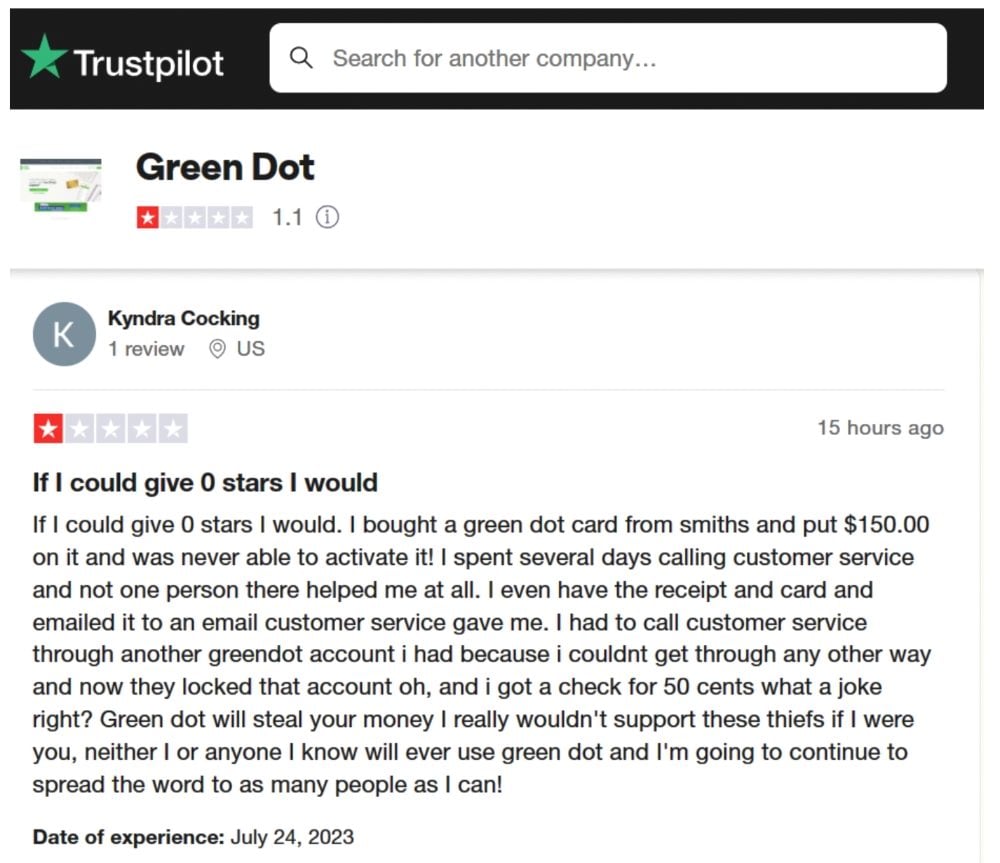Turn Customer Reviews Into Gold

The Gist
- Customer reviews are strategic assets. They influence brand perception, customer trust and sales more than ever before.
- Negative feedback highlights pain points. It offers actionable insights that can help businesses improve operations and customer experience.
- Responding to reviews is critical. A high response rate—especially to negative feedback—builds trust and demonstrates commitment to satisfaction.
- Encouraging reviews requires strategy. Brands can use incentives, storytelling, and multichannel outreach to inspire authentic customer reviews.
- Customer feedback fuels growth. By analyzing review data, businesses can enhance products, build credibility, and increase conversion rates.
Editor’s note: This article was updated with new information on March 27, 2025.
Customer reviews today are more than just feedback — they’re a powerful currency that shapes brand perception, drives purchasing decisions, and influences long-term success. A single review can build trust, highlight a brand’s strengths, or expose critical weaknesses. With consumers relying on peer insights more than ever, businesses must actively manage their online reputation, respond to feedback, and look at reviews as a strategic asset.
This article explores how businesses are using customer reviews to boost credibility, refine products, improve customer experiences, and ultimately drive growth.
Table of Contents
The Power of Customer Reviews
A 2024 survey found that 89% of U.S. shoppers read reviews before making a purchase, up from 85% in 2023. Additionally, 93% of consumers rely on online reviews to guide their buying decisions, reinforcing the continued influence of customer feedback on purchasing behavior. As such, customer reviews have become the bread-and-butter for sales, engagement, and marketing for online retailers.
Why Customer Reviews Are More Than Just Feedback
As the statistics indicate, the vast majority of today’s customers consult ratings and reviews across myriad platforms as a crucial part of their purchasing decision process. They put their trust in the experiences and opinions of fellow customers over more traditional marketing messages. These public customer narratives can single-handedly make or break a sale.
From Insights to Action: How Brands Leverage Review Data
Brian Lim, founder and CEO at iHeartRaves, told CMSWire that customer reviews are perhaps the most straightforward method of gauging how your business is doing and what you need to improve.
“By analyzing reviews, we found some common pain points, like sizing confusion and shipping delays, and set out to resolve them,” Lim explained. “Specifically, we added thorough fit descriptions to our size guides, which enhanced satisfaction while reducing returns. Positive reviews also enabled us to determine what aspects of the business resonated with customers, such as unique designs and fast customer support. Learning about these allowed us to double down on these strengths.”
Positive customer reviews create tangible benefits for a business. They build credibility and trust in the eyes of prospective customers, providing social proof of quality and value. High ratings and flattering testimonials boost conversion rates and sales as positive sentiment leads more site visitors to become customers. Positive review profiles also improve local search rankings and review site placement, amplifying a brand’s visibility and reach. Additionally, happy reviewers are more likely to return for repeat business and refer others.
Conversely, negative reviews can devastate a brand. They erect barriers of doubt that push potential customers to a brand’s competitors. Poorly rated businesses sink in search and review results, losing visibility. Although a few negative reviews are inevitable, widespread complaints often signal underlying issues that require swift responses and improvement.
The most successful brands work diligently to obtain positive feedback, respond thoughtfully to critiques, improve based on insights, and repair breakdowns. They invest in understanding customer perspectives and nurturing their online reputation. Reviews have moved beyond mere opinions—they now impact businesses in tangible ways.
Reviews, Surveys Help Brands Spot Customer Trends
Aly Jamison, senior PR manager at global sales training and consulting company RAIN Group, told CMSWire that beyond influencing deals, reviews play a major role in improving their CX.
“I look at both reviews and end-of-training surveys to spot trends and identify areas where we can refine our approach. It isn’t always easy to act on every single review or comment. You have to recognize what’s within your control to change and what’s more of an operational decision on the client’s end,” suggested Jamison. “By looking at the bigger picture and identifying patterns, we’re able to improve the experience for future participants.”
Related Article: 3 Ways to Better Support Customer Reviews
Monitoring Reviews Is Crucial
Monitoring and managing reviews must become strategic priorities for a brand. To fully monitor online reviews, brands must take a proactive, comprehensive approach across channels. This begins by setting up alerts for new reviews on major platforms like Google, Facebook, Yelp, Instagram, TikTok, and Amazon.
Dedicated review monitoring platforms should also be used to aggregate reviews from all sources into a central dashboard. Regular manual spot checks by searching the brand name and monitoring social media tags can help provide wider coverage. Additionally, Google keyword alerts can be set up to monitor reviews of a brand’s products and services.
Subscribing to review sites such as TrustPilot, asking customers directly for feedback, and incentivizing reviews can expand visibility. Internally, customer satisfaction metrics tied to reviews should be analyzed while review widgets on the brand’s website enable direct collection. With automation and a sound strategy, even small businesses can monitor reviews. This allows them to capitalize on positive feedback and respond quickly to minimize the damage that can come from negative reviews.
Additionally, technology provides business with a helping hand when it comes to being able to wade through the vast amounts of customer feedback.
“One of the most challenging aspects of using user feedback was trying to extract tangible feedback from the overwhelming amounts of data customers provided,” said Lim. “Thankfully, using advanced machine learning techniques like sentiment analysis permitted us to overcome this initial challenge. These algorithms grouped customer reviews into three main categories: positive, negative, or neutral, whilst identifying the topics customers talked about most. Social listening tools also helped capture feedback beyond standard reviews from various social media platforms.”
Negative Feedback Reveals Pain Points
Unfortunately, research has shown that consumers are more likely to leave negative reviews after a bad experience than they are to leave positive reviews after a good experience. Though they may be difficult to receive, negative reviews present brands with an opportunity for improvement. They reveal specific shortcomings through concrete examples. A complaint about delayed shipping exposes fulfillment issues, while scathing comments about rude service point to training deficiencies. The vivid criticisms and real-life cases cut through assumptions to reveal problem areas and pain points.

Aggregating the negatives across reviews uncovers systemic issues. If multiple reviewers cite shipping times, it indicates a widespread fulfillment bottleneck rather than an isolated incident. Frequency also shows the scale of the impact on the customer journey. Finally, the emotional language within negative reviews conveys the level of customer frustration. This helps prioritize the most damaging pain points.
Brands must keep in mind that not all negative reviews are legitimate. For instance, a customer may have mistakenly purchased the wrong product and wants to take their mistake out on the seller rather than send it back for a replacement.
Jeff Ferguson, partner and head of production at Amplitude Digital, told CMSWire about an incident that happened a few years ago in the lead-up to their client’s Black Friday Record Store Day.
“The store’s owner unintentionally angered some passionate Olivia Rodrigo and Taylor Swift fans,” Ferguson said. “What followed was a full-scale review bomb—dozens of 1-star reviews flooding Google and Yelp from people who had never even set foot in the store.”
Ferguson said that suddenly, they weren’t just managing online reputation; they were in a digital firefight, trying to report and remove fraudulent reviews before they could permanently damage the store’s credibility.
“We successfully held back the angry villagers, but it was a relentless game of whack-a-mole for an entire week,” he recalled.
The experience provided Ferguson with first hand insights into:
-
How quickly online perception can shift—and how to respond in real-time.
-
What businesses can do when facing fraudulent or bad-faith reviews.
-
How platforms like Google and Yelp handle (or fail to handle) mass review attacks.
-
Why proactive reputation management is critical, even if you think you’re in the clear.
While positive reviews are great for marketing, negative ones diagnose pressing needs. Rather than dismissing criticisms, brands should lean into them to find clues for driving improvement. By listening carefully to negative voices, businesses can gain an intimate understanding of pain points in the customer journey. The concerned customer providing tough feedback provides brands with actionable insights.
Review Response Rate
The rate at which a brand responds to online reviews, particularly negative ones, significantly impacts its reputation and customer perceptions. A high response rate signifies that the brand cares about feedback and values customers enough to publicly address their criticisms and concerns.
Thoughtful responses provide an opportunity to resolve issues raised in reviews by apologizing, offering solutions, and potentially converting detractors into promoters. A 2025 report from the Online Reputation and Wikipedia Blog revealed that 88% of consumers are likely to use a business that responds to all reviews, compared to just 47% who would consider a business that doesn’t respond at all. Responding also enables companies to politely add context to reviews, clarifying details the customer may have missed to provide their perspective.
A 2025 report from TrustMary indicated that 53% of customers expect brands to reply to negative customer feedback within seven days, with one-third anticipating a response within three days. Responding to negative reviews promptly is essential, as it demonstrates proactiveness and a genuine commitment to customer satisfaction.
Published responses further reassure prospective customers that are considering writing a review that the business takes responsibility. Reviewers often expect an acknowledgment from brands they took time to critique. In order to limit damage, build trust, and improve sentiment, brands should make responding to as many online reviews as possible a top priority. A high response rate signals to customers and prospects alike that their voice is valued—if the response is genuine and organic, and not a basic boilerplate response.
How to Encourage Customers to Leave Reviews
Encouraging customers to leave reviews takes more than a simple ask—it requires a consistent, strategic approach across channels that builds trust and makes feedback easy.
Use the table below to explore key tactics and why they work:
| Tactic | How It Works | Why It’s Effective |
|---|---|---|
| Ask Directly Through Email or SMS | Send review requests with direct links right after a positive customer experience. | Convenience and timing improve likelihood of follow-through. |
| Offer Light Incentives | Provide small rewards like points, coupons or discounts without compromising authenticity. | Motivates participation while maintaining trust. |
| Use Visual Prompts at Key Touchpoints | Place reminders on receipts, websites, or in-app screens to prompt reviews. | Gentle, repeated reminders nudge customers without pressure. |
| Leverage Social Sharing | Enable customers to share reviews on social platforms directly from your site. | Expands visibility and acts as social proof to new audiences. |
| Show Appreciation | Publicly thank or privately acknowledge customers who submit reviews. | Fosters goodwill and encourages future engagement. |
| Be Consistent Across Channels | Request reviews regularly on multiple platforms (email, in-app, social, POS). | Reinforces that customer feedback is valued and impactful. |
Turning Testimonials Into Trust: Storytelling That Fuels the Customer Journey
Sophie Musumeci, founder and CEO at Real Entrepreneur Women, takes a storytelling-driven approach to reviews, using testimonials not just as feedback but as powerful proof of success.
“We don’t just collect testimonials – we spotlight our clients’ wins through video interviews, social media, and email campaigns. When female coaches see others achieving $10k+ months after struggling to get clients for years, it’s more than just proof—it’s a possibility,” she said.
By showcasing real success stories through alternative review media such as video testimonials, client interviews, and social media posts, businesses can create a sense of community and trust. Potential customers don’t just read reviews—they see firsthand how a product or service has transformed others’ lives, making the experience relatable and aspirational.
However, one challenge businesses face is getting customers to articulate their wins in a compelling way. Musumeci overcame this by creating a supportive space where clients naturally share their success stories.
“Many hesitate to share their success publicly, so we create a supportive space to celebrate wins inside our private Facebook group. When they see others openly sharing their growth, they feel encouraged to do the same,” she added.
Technology plays a critical role in amplifying these reviews. Musumeci’s team leverages Facebook, YouTube, Instagram and email marketing to distribute social proof, reinforcing customer confidence at every touchpoint.
“Our private Facebook group acts as a hub where we collect organic client wins in real time. We use social media and email campaigns to showcase these stories, making our reviews more impactful and accessible.” By proactively curating and sharing customer feedback, brands can turn reviews into an ongoing cycle of trust-building and engagement, ultimately improving both customer experience and conversion rates.
Related Article: Customer Journey Mapping: A How-To Guide
Curate Customer Testimonials From Positive Reviews
Brands can turn powerful customer reviews into vivid testimonials for their marketing materials. Brands should keep an eye out for reviews that provide detailed, descriptive accounts of using their products or services. Additionally, they should consider reviews that emphasize specific benefits, and results, or convey the emotions felt by the customer. Directly quoting such impactful phases and passages from these reviews provides authenticity, but should only be done with the user’s permission. Brands should ensure that they attribute the quote to the reviewer.
To demonstrate diversity, brands should use testimonials from a diverse customer base. Concise, memorable quotes should be balanced with longer anecdotes to tell a fuller story. Curated testimonials should relate back to brand positioning and selling points. Testimonials should be periodically rotated to keep campaigns fresh. Curated review excerpts should also be prominently displayed across platforms like websites, ads, and email. Though they are rare, video testimonials can also bring reviews to life.
Turning Customer Feedback Into Business Growth
Because the majority of consumers use reviews as part of their purchase decision process, reviews are no longer optional. Managing customer reviews should be a strategic priority for every brand. Monitor sentiment, respond with care, analyze the data, and make it an iterative process. Brands that turn feedback into actionable insights will enhance trust, improve the customer experience, and increase sales.
Core Questions Around Customer Reviews
How do customer reviews impact a business’s success?
Reviews build trust, influence buying decisions and boost sales. Positive reviews attract customers and improve search rankings, while negative ones highlight areas for improvement.
What is the best way to encourage customers to leave reviews?
Make it easy and engaging. Ask through email or SMS, provide direct links and showcase success stories to inspire authentic feedback.
Source link




